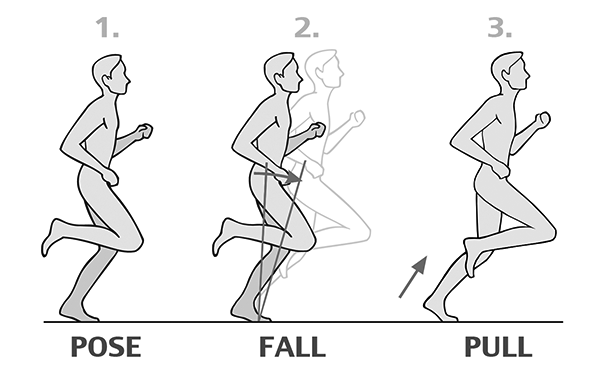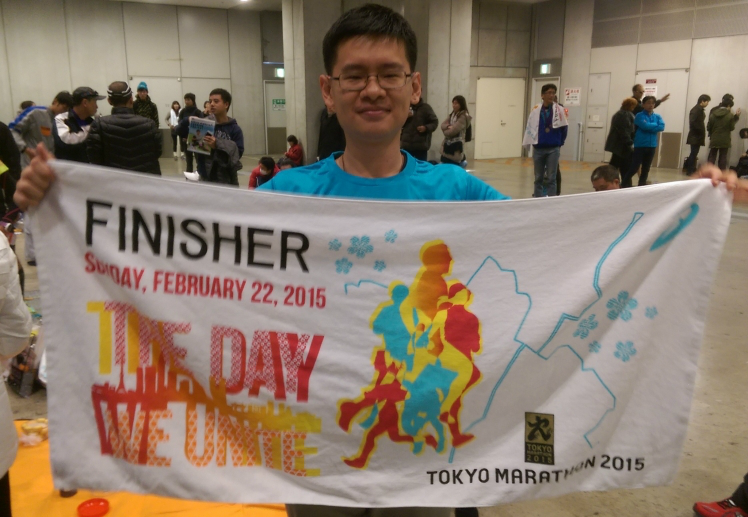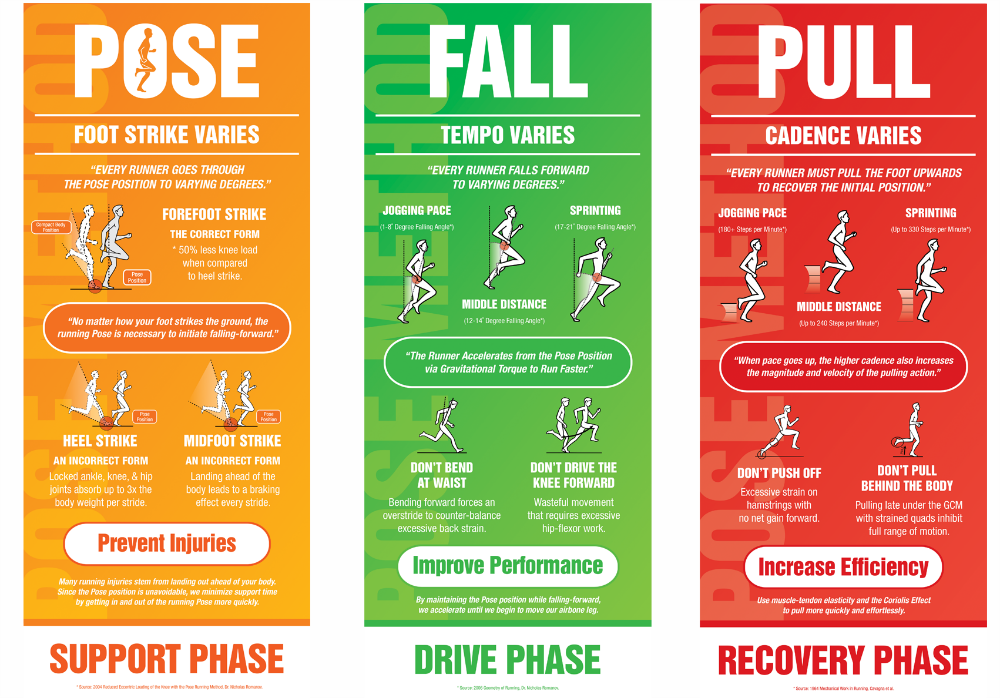Comprising of three primary elements – Pose, Fall and Pull – the Pose running technique typically uses gravity instead of muscular effort as the primary force for forward motion in running.
Created decades ago by Dr. Nicholas Romanov, a PhD sports scientist from the Soviet Union, the main purpose of this method is to help runners reduce their risk of injury while at the same time, improving their running performance.
Scientifically proven
Added Neo Wei Siang, 30, a Pose certified running technique specialist since August 2016, “The pose method is scientifically proven and there are more than 30 research papers and articles that this method works.”
This certification programme, which is taught at several centres around the world, is an intensive two-day course taught by either Dr. Romanov himself, or master-level Pose coaches who have been in the business for more than ten years.
Currently teaching Pose running techniques on a freelance basis, Neo is keen to help other runners who want to run injury-free. He says, “I want to provide a service to runners who are interested in running injury-free and to be able to give them specific pointers in doing so.” He charges between $50-100 for a session (subject to changes).
Logical but tricky to understand
Neo continued, “In terms of the Pose running concept itself, it is logical but tricker to understand and takes time to grasp the full elements of the pose, fall and pull techniques. When I first tried pose running, it felt good and I did not have my previous shin splints or ankle issues; I was very prone to especially shin splints then.”
However, Neo points out that pose running is something that cannot be rushed into. He said, “It is a big change from what many runners may be used to, and is something that you can’t really rush into. You have to slowly ease into it.”
Neo continued, “Many runners tend to rush into it when it comes to technique training; but if they speed up the length of training and cut down on the amount of time, it comes at the expense of not learning the technique properly. It’s important to give yourself a transition period of at least three to six months to allow yourself to slowly ease into it.”
Offer several benefits to runners
Picking up this running technique correctly though, offers several benefits to runners.
Explained Neo, “According to a research paper (done in 2004) by Dr. Romanov and Tim Noakes (the author of the well-known running book ‘Lore of Running’), it had been found to reduce the knee impact by 50 per cent because of the landing, as well as reducing a runner’s oxygen consumption needed by the body, by 20 per cent. And thirdly it helps you to run faster, longer and injury-free.”
He added that since he had started experimenting himself with the Pose running method since 2009, he has not been injured. Said Neo, “2007 and 2008 were my active running years when I took part in races and ended up with frequent injuries. So I started experimenting with different forms of running and I eventually stumbled upon the Pose method. I am proof that it works.”
He also pointed out that his own running times have improved somewhat, as well. For example for the full marathon distance, Neo’s personal best timing was 4 hours and 20 minutes back in 2008 at the Standard Chartered Singapore Marathon. But he has since clocked a 3 hour and 57 minute marathon at the Hokkaido Marathon.
A preview of pose running
Recently Neo gave me a preview of the Pose running method and what one of his pose running sessions entails.
For every runner new to the Pose technique, Neo begins by video analysing their current running technique and gives pointers on how to correct this based on the Pose method.
In terms of my own running, while Neo had pointed out that my ground contact time balance was evenly distributed between my left and right foot, there were other aspects that still needed working on.
Then based on each runner’s existing style, he then prescribes and demonstrates a variety of strengthening exercises and drills in order to develop the runner’s muscle memory. As we do the drills during the session, he would then correct us on whether we are doing them in the right manner.
Some examples of such drills include the bodyweight perception (perceives bodyweight as pressure at the ball of the foot), foot tapping (to develop the pulling action with the ankle under the hips), front lunge (to reinforce pulling action with ankle pick-up) and two legged hops (to develop elasticity by maintaining the ’S’ body posture).
These drills may look easy at first glance, but upon doing them, I discovered that they are much harder than they appear! In fact I found myself struggling with a few of them.
Drills help to get the basics and movements correct
According to Neo, the purpose of doing such drills on a regular basis is to get the basics and movements of the pose running forms and techniques correct, in order to ingrain it into the muscle memory.
He says, “For example, you would not start shooting basketball hoops if your throw is bad. I advise runners to bring in these flexibility drills slowly for example to do them for about 5 to 10 minutes either before or after their normal runs or as part of their warm up and cool down. This will slowly increase the body’s muscle memory and after a while, you will subconsciously begin to get the form correct.”
Added Neo, “But at the same time, do try and keep your running distances short, because over longer distances, your form will disintegrate as you become physically and mentally tired and so you will lose focus. About 5km will be a good distance to begin running with. Do the technique slowly and practise in front of a mirror; that will help you to gauge whether you are doing things correctly.”
For more information
- For a more in-depth introduction into the techniques of Pose running, check out this YouTube video.
- For a detailed look into the Pose running stride and what it entails, check out this YouTube video.
You can contact Neo Wei Siang here for a session on Pose running.
Other blog posts
Prevent and manage running injuries with Tim Maiden
Feet Problems in Runners by Tim Maiden




Leave a Comment